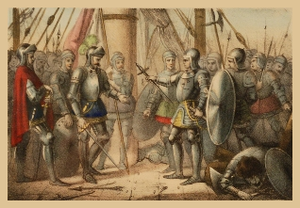Conflict
Joan II, Queen of Naples, died on 2 February 1435, [1] and by her will bestowed Rene d'Anjou with the crown of Naples. [14] However, Alfonso, king of Aragon and Sicily, whom Queen Joan II had primarily adopted, claimed the succession, on the ground of this first adoption. [1] Thus the successionist war between the House of Anjou and the House of Barcelona over the Kingdom of Naples ensued. [12] [13]
At this critical moment Rene d'Anjou was currently imprisoned in the Duchy of Burgundy [15] and Alfonso of Aragon lost no time in stirring up his partisans in the Kingdom of Naples, whilst he himself sailed from Sicily with a large fleet to besiege Gaeta. [14]
Gaeta itself was garrisoned by the Genoese [4] who shortly after Queen Joan's death dispatched Francesco Spinola with 800 infantry. [5] [16] The Duke of Milan (to whom the Republic of Genoa had lately submitted) [1] sided with the House of Anjou [16] and dispatched a Genoese fleet [13] in July under Biagio Assereto in order to relieve Gaeta. [16] Alfonso immediately sailed against the Genoese fleet [12] with superior numbers. [15] The two fleets met near the island of Ponza and after a long and gallant conflict, [15] which lasted for ten hours, [13] the Genoese were completely victorious. [6] The royal galley of Aragon was compelled to strike, [15] and Alfonso V, King of Aragon was captured. [2]

Alfonso the Magnanimous was King of Aragon and King of Sicily and the ruler of the Crown of Aragon from 1416 and King of Naples from 1442 until his death. He was involved with struggles to the throne of the Kingdom of Naples with Louis III of Anjou, Joanna II of Naples and their supporters, but ultimately failed and lost Naples in 1424. He recaptured it in 1442 and was crowned king of Naples. He had good relations with his vassal, Stjepan Kosača, and his ally, Skanderbeg, providing assistance in their struggles in the Balkans. He led diplomatic contacts with the Ethiopian Empire and was a prominent political figure of the early Renaissance, being a supporter of literature as well as commissioning several constructions for the Castel Nuovo.
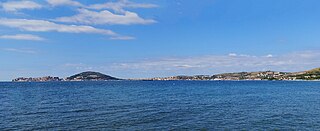
Gaeta is a city in the province of Latina, in Lazio, Italy. Set on a promontory stretching towards the Gulf of Gaeta, it is 120 kilometres from Rome and 80 km (50 mi) from Naples.

Isabella was suo jure Duchess of Lorraine, from 25 January 1431 to her death in 1453. She was also Queen of Naples by marriage to René of Anjou. Isabella ruled the Kingdom of Naples and her husband's domains in France as regent during his imprisonment in Burgundy in 1435–1438.

Charles du Maine (1414–1472) was a French prince of blood and an advisor to Charles VII of France, his brother-in-law, during the Hundred Years' War. He was the third son of Louis II, Duke of Anjou and King of Naples, and Yolande of Aragon.

Eleanor of Alburquerque was a Castilian noblewoman, Countess of Alburquerque, who became Queen of Aragon by her marriage to Ferdinand I of Aragon. She was the regent of Aragon during the absence of her son the king in 1420.

The Battle of Curzola was a naval battle fought on 9 September 1298 between the Genoese and Venetian navies. It was a disaster for Venice, a major setback among the many battles fought in the 13th and 14th centuries between Pisa, Genoa, and Venice in a long series of wars for the control of Mediterranean and Levantine trade.

The Battle of Meloria was fought near the islet of Meloria in the Ligurian Sea on 5 and 6 August 1284 between the fleets of the Republics of Genoa and Pisa as part of the Genoese-Pisan War. The victory of Genoa and the destruction of the Pisan fleet marked the decline of the Republic of Pisa.
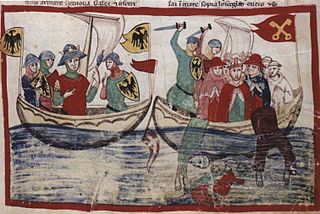
The naval Battle of Giglio or Montecristo was a military clash between a fleet of the Holy Roman Emperor Frederick II and a fleet of the Republic of Genoa in the Tyrrhenian Sea. It took place on Friday, May 3, 1241 between the islands of Montecristo and Giglio in the Tuscan Archipelago and ended with the victory of the Imperial fleet.

The Venetian–Genoese Wars were four conflicts between the Republic of Venice and the Republic of Genoa which took place between 1256 and 1381. Each was resolved almost entirely through naval clashes, and they were connected to each other by interludes during which episodes of piracy and violence between the two Italian trading communities in the Mediterranean Sea and the Black Sea were commonplace, in a "cold war" climate.
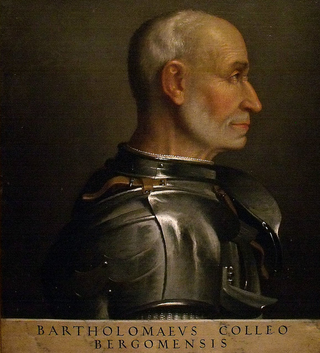
The Battle of Bosco Marengo(aka Battle of Frascata) was fought in the autumn of 1447.

The House of Spinola, or Spinola family, was a leading Italian political family centered in the Republic of Genoa. Their influence was at its greatest extent in the thirteenth and fourteenth centuries.
Peter, Infante of Aragon, Viceroy of Sicily (1424–1425) and Duke of Noto, was the sixth child of King Ferdinand I of Aragón and Countess Eleanor of Alburquerque.

The Battle of Cassano was fought in the Autumn of 1259 between Guelph and Ghibelline armies in Northern Italy.
Biagio Assereto was an Italian admiral at the service of the Republic of Genoa.

The Genoese navy was the naval contingent of the Republic of Genoa's military. From the 11th century onward the Genoese navy protected the interests of the republic and projected its power throughout the Mediterranean and Black Seas. It played a crucial role in the history of the republic as a thalassocracy and a maritime trading power.
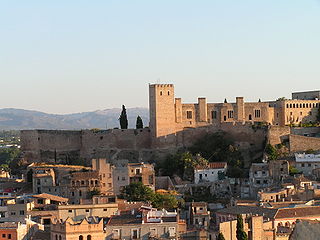
The siege of Tortosa was a military action of the Second Crusade (1147–49) in Spain. A multinational force under the command of Count Raymond Berengar IV of Barcelona besieged the city of Tortosa, then a part of the Almoravid Emirate, for six months before the garrison surrendered.

The Free Municipality of Sassari or Republic of Sassari was a state in the region of Sassari in Sardinia during the 13th and 14th centuries, confederated first with the Republic of Pisa as a semi-autonomous subject and later with the Republic of Genoa as a nominally independent ally. It was the first and only independent city-state of Sardinia during the early renaissance.
The Catalan–Genoese War, also known as Aragonese–Genoese War was an armed conflict between the Crown of Aragon and the Republic of Genoa that lasted from 1330 to 1336
The siege of Djerba in 1432 was one of the battles of the Aragonese expedition to Tunisia of 1432.

The Conquest of the Kingdom of Naples were the campaigns carried out between 1435 and 1442 that meant the incorporation of the Kingdom of Naples into the Crown of Aragon.
This page is based on this
Wikipedia article Text is available under the
CC BY-SA 4.0 license; additional terms may apply.
Images, videos and audio are available under their respective licenses.
